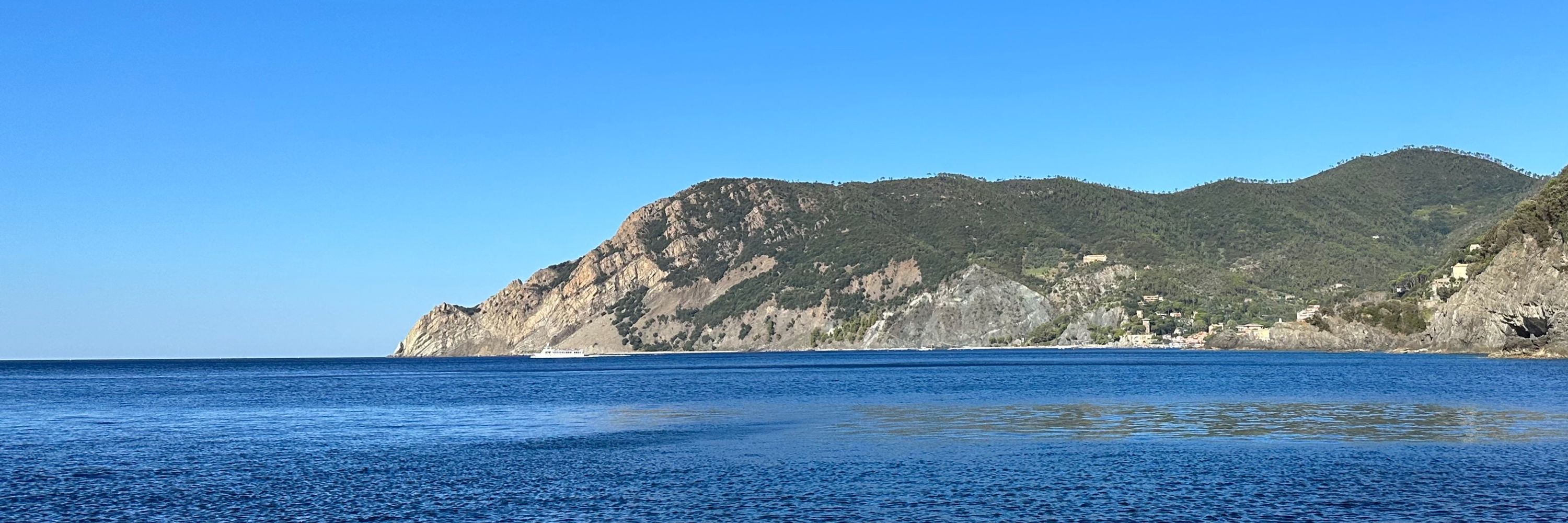
Itay Budin
@ibudin.bsky.social
Head of the Budin lab at UCSD (www.budinlab.com). Musings on thin layers of grease in our cells (and other topics). Lipids, cell membranes, biophysics, chem bio, evolution. 🏳️🌈
Reposted by Itay Budin
Researchers in Itay Budin's lab, incl. William Moore, have created a tool with the power to see lipid movement inside cells in unprecedented detail. The tool uses fluorogens to illuminate certain lipids while other remain dark. Their work appears in Nature Chemical Biology. https://bit.ly/4hnDFZG

The Many FACES of Lipid Research
Scientists have long wanted to get a closer look at the movement of lipids around a cell, but it’s tough to visualize with traditional light microscopy. UC San Diego researchers have unveiled a new technology with the power to see cells in unprecedented detail.
bit.ly
October 17, 2025 at 6:01 PM
Researchers in Itay Budin's lab, incl. William Moore, have created a tool with the power to see lipid movement inside cells in unprecedented detail. The tool uses fluorogens to illuminate certain lipids while other remain dark. Their work appears in Nature Chemical Biology. https://bit.ly/4hnDFZG
Sharing a new in-depth review article on intrinsic lipid curvature and models of lipidome adaptation to the environment that I recently wrote with Jacob Winnikoff for Progress in Lipid Research (open access).
www.sciencedirect.com/science/arti...
www.sciencedirect.com/science/arti...


October 16, 2025 at 1:53 PM
Sharing a new in-depth review article on intrinsic lipid curvature and models of lipidome adaptation to the environment that I recently wrote with Jacob Winnikoff for Progress in Lipid Research (open access).
www.sciencedirect.com/science/arti...
www.sciencedirect.com/science/arti...
Reposted by Itay Budin
How does Mycoplasma pneumoniae scavenge lipids from its host membranes? | Science Advances www.science.org/doi/full/10....

How does Mycoplasma pneumoniae scavenge lipids from its host membranes?
P116 is an adaptive, all-in-one lipid acquisition machinery fit for any host environment.
www.science.org
October 2, 2025 at 11:13 AM
How does Mycoplasma pneumoniae scavenge lipids from its host membranes? | Science Advances www.science.org/doi/full/10....
Reposted by Itay Budin
I am super excited to announce that we have a tenure-track faculty position in biophysics open in the Department of Physics at Carnegie Mellon! 🧪
Interfolio link: apply.interfolio.com/174360
PLEASE, share widely across the blue skies!
Let me briefly explain what we're looking for:
1/10
Interfolio link: apply.interfolio.com/174360
PLEASE, share widely across the blue skies!
Let me briefly explain what we're looking for:
1/10

September 26, 2025 at 3:35 PM
I am super excited to announce that we have a tenure-track faculty position in biophysics open in the Department of Physics at Carnegie Mellon! 🧪
Interfolio link: apply.interfolio.com/174360
PLEASE, share widely across the blue skies!
Let me briefly explain what we're looking for:
1/10
Interfolio link: apply.interfolio.com/174360
PLEASE, share widely across the blue skies!
Let me briefly explain what we're looking for:
1/10
Reposted by Itay Budin
Are the lipids associated with static protein structures there as long-lived ligands or an effect of preferential solvation? This computational-experimental framework shows the way! #lipidtime #compchem
www.nature.com/articles/s41...
www.nature.com/articles/s41...

Molecular basis for the regulation of membrane proteins through preferential lipid solvation - Nature Chemical Biology
Static protein structures can capture the association of lipids, but it is unclear whether the association is due to lipids acting as long-lived ligands or the solvation of preferred lipids around the protein. A computational-experimental framework has now shown that for the protein CLC-ec1, it is the change in lipid solvation energies that drives dimerization, with preferred lipids around the protein modulating this driving force.
www.nature.com
September 26, 2025 at 3:29 PM
Are the lipids associated with static protein structures there as long-lived ligands or an effect of preferential solvation? This computational-experimental framework shows the way! #lipidtime #compchem
www.nature.com/articles/s41...
www.nature.com/articles/s41...
Congrats Erdinc! So well deserved
So flattering! Thanks @biophysicalsoc.bsky.social for this deeply meaningful award! All credit goes to my lab members and collaborators.
@scilifelab.se @ki.se
@scilifelab.se @ki.se
Erdinc Sezgin to Receive 2026 Early Independent Career Award
www.biophysics.org/news-room/er...
www.biophysics.org/news-room/er...
September 26, 2025 at 5:28 AM
Congrats Erdinc! So well deserved
Reposted by Itay Budin
Wonderful to see our paper on the #organelle signatures of #neurons and #astrocytes out in final form - congratulations, Shannon Rhoads and team!🎉 t.co/BPxKlbU6Ou
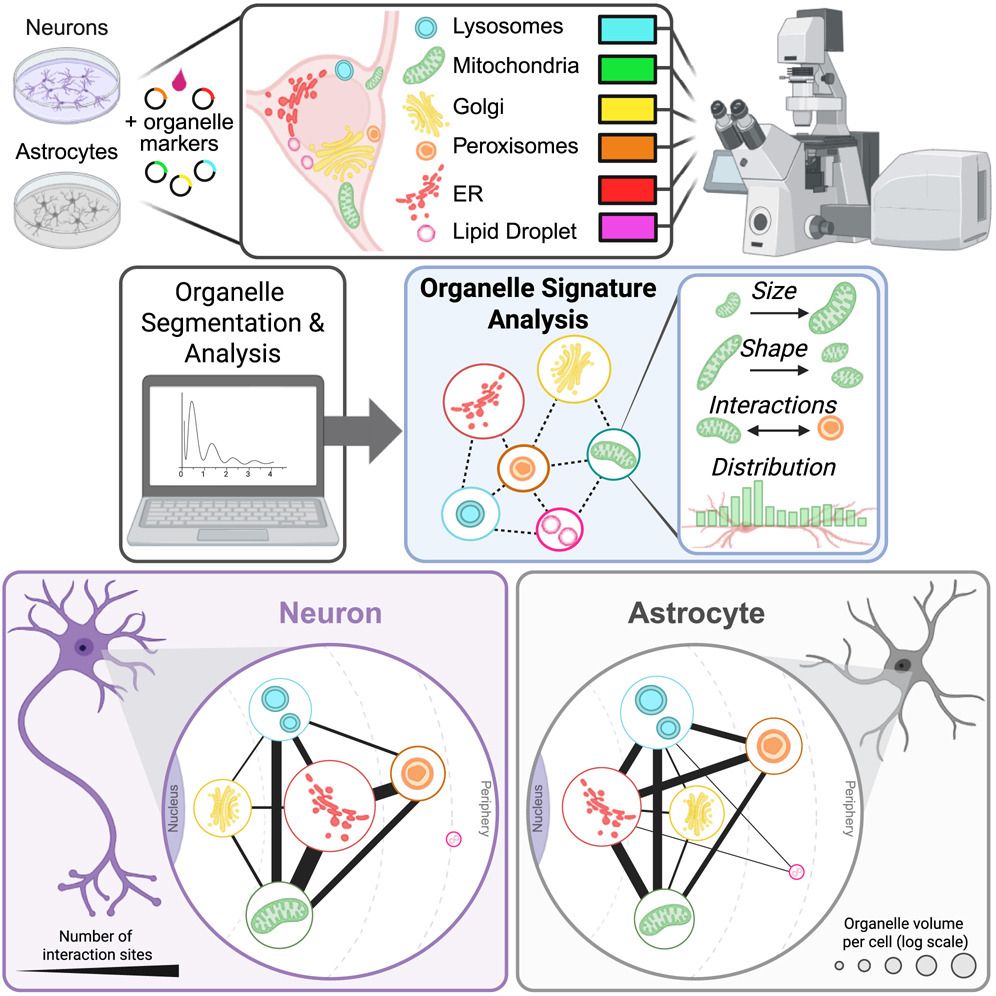
September 17, 2025 at 5:38 PM
Wonderful to see our paper on the #organelle signatures of #neurons and #astrocytes out in final form - congratulations, Shannon Rhoads and team!🎉 t.co/BPxKlbU6Ou
Very excited to share new work out today in @natchembio.nature.com on a new approach - FACES - for selectively imaging of phospholipids and other biomolecules at spatial resolutions down to individual membrane leaflets (1/n) www.nature.com/articles/s41...

Leaflet-specific phospholipid imaging using genetically encoded proximity sensors - Nature Chemical Biology
An approach combining bioorthogonal chemistry with genetically encoded fluorogen-activating proteins enables subcellular imaging of phospholipids and glycans, as well as the visualization of lipid tra...
www.nature.com
September 15, 2025 at 6:03 PM
Very excited to share new work out today in @natchembio.nature.com on a new approach - FACES - for selectively imaging of phospholipids and other biomolecules at spatial resolutions down to individual membrane leaflets (1/n) www.nature.com/articles/s41...
Reposted by Itay Budin
UW Tacoma is hiring a tenure track Assistant Professor of Biochemistry and a teaching Assistant Professor of Organic Chemistry. Please share widely and consider applying.
Biochemistry:
apply.interfolio.com/172884
Organic Chemistry:
apply.interfolio.com/172940
Biochemistry:
apply.interfolio.com/172884
Organic Chemistry:
apply.interfolio.com/172940
Apply - Interfolio
{{$ctrl.$state.data.pageTitle}} - Apply - Interfolio
apply.interfolio.com
September 11, 2025 at 2:17 AM
UW Tacoma is hiring a tenure track Assistant Professor of Biochemistry and a teaching Assistant Professor of Organic Chemistry. Please share widely and consider applying.
Biochemistry:
apply.interfolio.com/172884
Organic Chemistry:
apply.interfolio.com/172940
Biochemistry:
apply.interfolio.com/172884
Organic Chemistry:
apply.interfolio.com/172940
Reposted by Itay Budin
I am delighted to announce that the UW Department of Biochemistry has opened searches for TWO tenure-track positions.
Descriptions and links in the following two posts.
Descriptions and links in the following two posts.
August 28, 2025 at 8:47 PM
I am delighted to announce that the UW Department of Biochemistry has opened searches for TWO tenure-track positions.
Descriptions and links in the following two posts.
Descriptions and links in the following two posts.
Tour de force on the kinetics and mechansms of lipid transport in cells through exquisite use of bifunctional probes by @nadlerlab.bsky.social and colleagues. Such an exciting time for the field. www.nature.com/articles/s41...

Quantitative imaging of lipid transport in mammalian cells - Nature
Directional, non-vesicular lipid transport is responsible for fast, species-selective lipid sorting into organelle membranes.
www.nature.com
August 21, 2025 at 2:07 AM
Tour de force on the kinetics and mechansms of lipid transport in cells through exquisite use of bifunctional probes by @nadlerlab.bsky.social and colleagues. Such an exciting time for the field. www.nature.com/articles/s41...
The 4 chemically targeted Laurdan derivatives (for mitochondria, ER, lyso/endosomes, and the Golgi) that we published last year are now available (at a pretty reasonable price) from Avanti Polar Lipids (cat #880194, 880197, 880193, 880196). These have been very popular! pubs.acs.org/doi/full/10....

Organelle-Targeted Laurdans Measure Heterogeneity in Subcellular Membranes and Their Responses to Saturated Lipid Stress
Organelles feature characteristic lipid compositions that lead to differences in membrane properties. In cells, membrane ordering and fluidity are commonly measured using the solvatochromic dye Laurdan, whose fluorescence is sensitive to lipid packing. As a general lipophilic dye, Laurdan stains all hydrophobic environments in cells; therefore, it is challenging to characterize membrane properties in specific organelles or assess their responses to pharmacological treatments in intact cells. Here, we describe the synthesis and application of Laurdan-derived probes that read out the membrane packing of individual cellular organelles. The set of organelle-targeted Laurdans (OTL) localizes to the ER, mitochondria, lysosomes, and Golgi compartments with high specificity while retaining the spectral resolution needed to detect biological changes in membrane ordering. We show that ratiometric imaging with OTLs can resolve membrane heterogeneity within organelles as well as changes in lipid packing resulting from inhibition of trafficking or bioenergetic processes. We apply these probes to characterize organelle-specific responses to saturated lipid stress. While the ER and lysosomal membrane fluidity is sensitive to exogenous saturated fatty acids, that of mitochondrial membranes is protected. We then use differences in ER membrane fluidity to sort populations of cells based on their fatty acid diet, highlighting the ability of organelle-localized solvatochromic probes to distinguish between cells based on their metabolic state. These results expand the repertoire of targeted membrane probes and demonstrate their application in interrogating lipid dysregulation.
pubs.acs.org
August 15, 2025 at 3:57 PM
The 4 chemically targeted Laurdan derivatives (for mitochondria, ER, lyso/endosomes, and the Golgi) that we published last year are now available (at a pretty reasonable price) from Avanti Polar Lipids (cat #880194, 880197, 880193, 880196). These have been very popular! pubs.acs.org/doi/full/10....
Reposted by Itay Budin
Excited to share our latest work developing molecular glue degraders of ZBTB11, now out in @natchembio.nature.com
www.nature.com/articles/s41...
www.nature.com/articles/s41...

ZBTB11 depletion targets metabolic vulnerabilities in KRAS inhibitor-resistant PDAC - Nature Chemical Biology
Depletion of a transcriptional factor ZBTB11 using molecular glue degraders can overcome oxidative-phosphorylation-mediated KRAS inhibitor resistance in pancreatic ductal adenocarcinoma with low acute...
www.nature.com
August 11, 2025 at 1:51 PM
Excited to share our latest work developing molecular glue degraders of ZBTB11, now out in @natchembio.nature.com
www.nature.com/articles/s41...
www.nature.com/articles/s41...
Honored to be among this amazing group and be recognized for the early career research award in memory of Günter Blobel
Meet the 2025 ASCB Award Winners—trailblazing scientists honored for research, mentoring, education, and innovation. Celebrate excellence across all career stages in cell biology. Read more: www.ascb.org/society-news...

August 4, 2025 at 11:21 PM
Honored to be among this amazing group and be recognized for the early career research award in memory of Günter Blobel
Reposted by Itay Budin
We are looking for a postdoc to study biomolecular condensates and/or mechanosensitive membrane proteins. Please help spread the news 🙏
sites.rutgers.edu/shi-lab/look...
sites.rutgers.edu/shi-lab/look...

Looking for a postdoc - Shi Lab
The Shi lab at Rutgers-New Brunswick is seeking a postdoctoral researcher to study biomolecular condensates and/or mechanosensitive membrane proteins. To see more information and apply, please go to t...
sites.rutgers.edu
May 29, 2025 at 10:14 PM
We are looking for a postdoc to study biomolecular condensates and/or mechanosensitive membrane proteins. Please help spread the news 🙏
sites.rutgers.edu/shi-lab/look...
sites.rutgers.edu/shi-lab/look...
Reposted by Itay Budin
Our Special Issue: Cell Biology of Mitochondria is complete.
Explore our ToC: journals.biologists.com/jcs/issue/13...
Our cover image highlights mitochondria (magenta) and DNA (cyan) in glioblastoma cells from Buckley et al.
journals.biologists.com/jcs/article/...
#JCSMitoSI #Mitochondria
Explore our ToC: journals.biologists.com/jcs/issue/13...
Our cover image highlights mitochondria (magenta) and DNA (cyan) in glioblastoma cells from Buckley et al.
journals.biologists.com/jcs/article/...
#JCSMitoSI #Mitochondria

May 15, 2025 at 2:32 PM
Our Special Issue: Cell Biology of Mitochondria is complete.
Explore our ToC: journals.biologists.com/jcs/issue/13...
Our cover image highlights mitochondria (magenta) and DNA (cyan) in glioblastoma cells from Buckley et al.
journals.biologists.com/jcs/article/...
#JCSMitoSI #Mitochondria
Explore our ToC: journals.biologists.com/jcs/issue/13...
Our cover image highlights mitochondria (magenta) and DNA (cyan) in glioblastoma cells from Buckley et al.
journals.biologists.com/jcs/article/...
#JCSMitoSI #Mitochondria
Reposted by Itay Budin
Kailash Venkatraman, Nicolas-Frédéric Lipp & @ibudin.bsky.social examine the similarities between prokaryotic intracytoplasmic membranes & mitochondrial IMs, & discuss whether cristae evolution has driven specialisation of the #mito lipidome.
journals.biologists.com/jcs/article/...
#JCSMitoSI
journals.biologists.com/jcs/article/...
#JCSMitoSI

May 12, 2025 at 9:05 AM
Kailash Venkatraman, Nicolas-Frédéric Lipp & @ibudin.bsky.social examine the similarities between prokaryotic intracytoplasmic membranes & mitochondrial IMs, & discuss whether cristae evolution has driven specialisation of the #mito lipidome.
journals.biologists.com/jcs/article/...
#JCSMitoSI
journals.biologists.com/jcs/article/...
#JCSMitoSI
Reposted by Itay Budin
Happy to share our new publication in ACS Chemical Biology @pubs.acs.org reporting a new chemical biology tool – dual SLIPT! Congratulations to first author Kristina Bayer @XXX, all co-authors and collaborator Shige Yoshimura @XXX. Open Access:
pubs.acs.org/doi/10.1021/... (1/5)
pubs.acs.org/doi/10.1021/... (1/5)

Dual SLIPT–A Lipid Mimic to Enable Spatiotemporally Defined, Sequential Protein Dimerization
Spatiotemporal control of proteins is crucial for cellular phenomena such as signal integration, propagation, as well as managing crosstalk. In membrane-associated signaling, this regulation is often enabled by lipids, wherein highly dynamic, sequential recruitment of interacting proteins is key to successful signaling. Here, we present dual SLIPT (self-localizing ligand-induced protein translocation), a lipid-analog tool, capable of emulating this lipid-mediated sequential recruitment of any two proteins of interest. Dual SLIPT self-localizes to the inner leaflet of the plasma membrane (PM). There, dual SLIPT presents trimethoprim (TMP) and HaloTag ligand (HTL) to cytosolic proteins of interest (POIs), whereupon POIs fused to the protein tags iK6eDHFR, or to HOB are recruited. A systematic extension of the linkers connecting the two mutually orthogonal headgroups was implemented to overcome the steric clash between the recruited POIs. Using Förster resonance energy transfer (FRET), we verify that the resulting probe is capable of simultaneous binding of both proteins of interest, as well as their dimerization. Dual SLIPT was found to be particularly suitable for use in physiologically relevant concentrations, such as recruitment via tightly regulated, transient lipid species. We further expanded dual SLIPT to the photocontrollable dual SLIPTNVOC, by introducing a photocaging group onto the TMP moiety. Dual SLIPTNVOC enables sequential and spatiotemporally defined dimerization upon blue light irradiation. Thus, dual SLIPTNVOC serves as a close mimic of physiology, enabling interrogation of dynamic cytosol-to-plasma membrane recruitment events and their impact on signaling.
pubs.acs.org
April 25, 2025 at 1:00 PM
Happy to share our new publication in ACS Chemical Biology @pubs.acs.org reporting a new chemical biology tool – dual SLIPT! Congratulations to first author Kristina Bayer @XXX, all co-authors and collaborator Shige Yoshimura @XXX. Open Access:
pubs.acs.org/doi/10.1021/... (1/5)
pubs.acs.org/doi/10.1021/... (1/5)
Out today, we report how small chemical modifications in the metabolism of ergosterol are needed for yeast membranes to phase seperate into ordered yet fluid domains www.science.org/doi/10.1126/... (1/n)

Structural dissection of ergosterol metabolism reveals a pathway optimized for membrane phase separation
The metabolism of ergosterol shapes this lipid to allow the formation of fluid membrane domains in yeast cells.
www.science.org
April 24, 2025 at 3:04 PM
Out today, we report how small chemical modifications in the metabolism of ergosterol are needed for yeast membranes to phase seperate into ordered yet fluid domains www.science.org/doi/10.1126/... (1/n)
New evolution perspective/review piece on mitochondrial membranes in Journal of Cell Science. How did the mitochondrial lipidome evolve alongside the structure of cristae? Part of a special issue on mitochondria. @biologists.bsky.social #lipidtime
journals.biologists.com/jcs/article/...
journals.biologists.com/jcs/article/...

Origin and evolution of mitochondrial inner membrane composition
Summary: An examination of the morphological similarities between prokaryotic intracytoplasmic membranes and mitochondrial inner membranes, and whether cristae evolution has driven specialization of t...
journals.biologists.com
April 23, 2025 at 4:07 PM
New evolution perspective/review piece on mitochondrial membranes in Journal of Cell Science. How did the mitochondrial lipidome evolve alongside the structure of cristae? Part of a special issue on mitochondria. @biologists.bsky.social #lipidtime
journals.biologists.com/jcs/article/...
journals.biologists.com/jcs/article/...
A couple of weeks late (but before its in an issue!) but I want to highlight this exceptionally important paper from @leventallab.bsky.social in @cellpress.bsky.social on a new and fundamentally important model for the plasma membrane of mammalian cells www.cell.com/cell/abstrac...
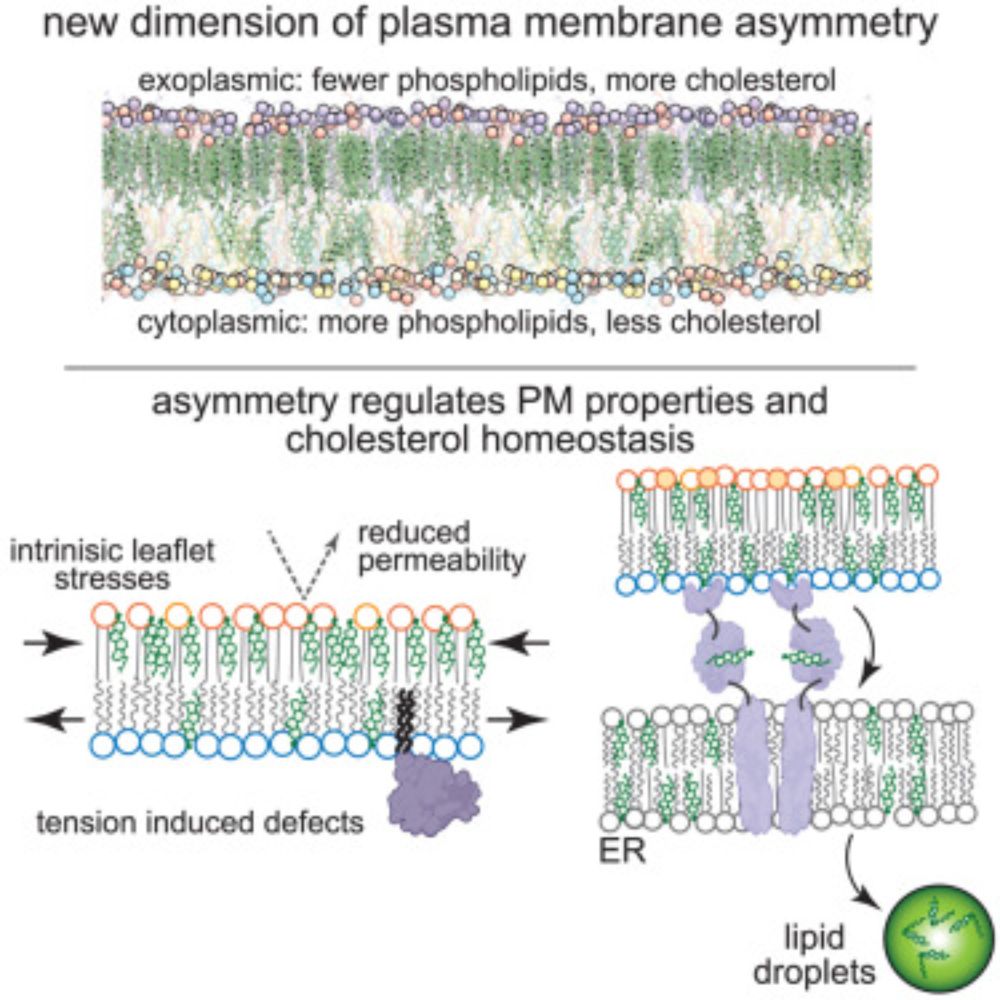
Cell membranes sustain phospholipid imbalance via cholesterol asymmetry
This work challenges a major assumption in cell biology by showing that lipid bilayers
can have drastically different phospholipid abundances between their two leaflets.
This lipid abundance asymmetry...
www.cell.com
April 13, 2025 at 8:13 PM
A couple of weeks late (but before its in an issue!) but I want to highlight this exceptionally important paper from @leventallab.bsky.social in @cellpress.bsky.social on a new and fundamentally important model for the plasma membrane of mammalian cells www.cell.com/cell/abstrac...
Congrats to @jeremybaskin.bsky.social for receiving the ACS Chemical Biology young investigator award…plus organizing a fantastic session capped off with a tour de force talk on phosphatidic acid dynamics
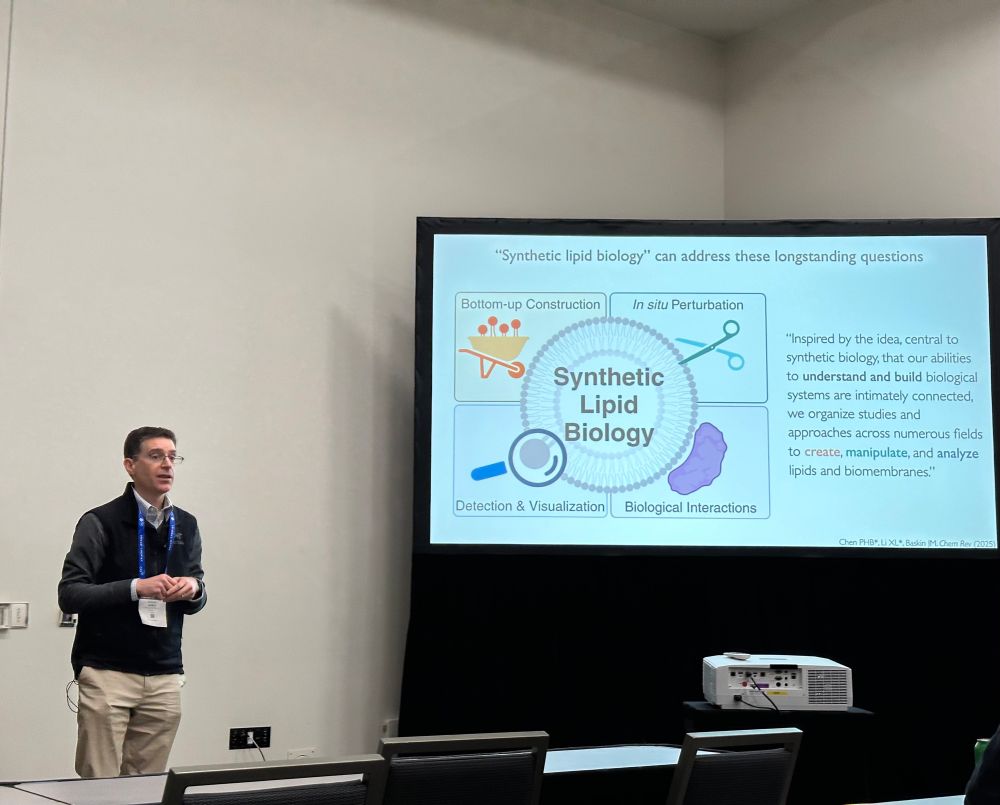
March 27, 2025 at 1:21 AM
Congrats to @jeremybaskin.bsky.social for receiving the ACS Chemical Biology young investigator award…plus organizing a fantastic session capped off with a tour de force talk on phosphatidic acid dynamics
Reposted by Itay Budin
Are lipids actively sorted during clathrin mediated endocytosis like proteins? @mathilda95.bsky.social addresses this key open question together with our collaborators from the Honigmann and Modes labs using a new Lipid-STED workflow.
www.biorxiv.org/content/10.1...
www.biorxiv.org/content/10.1...
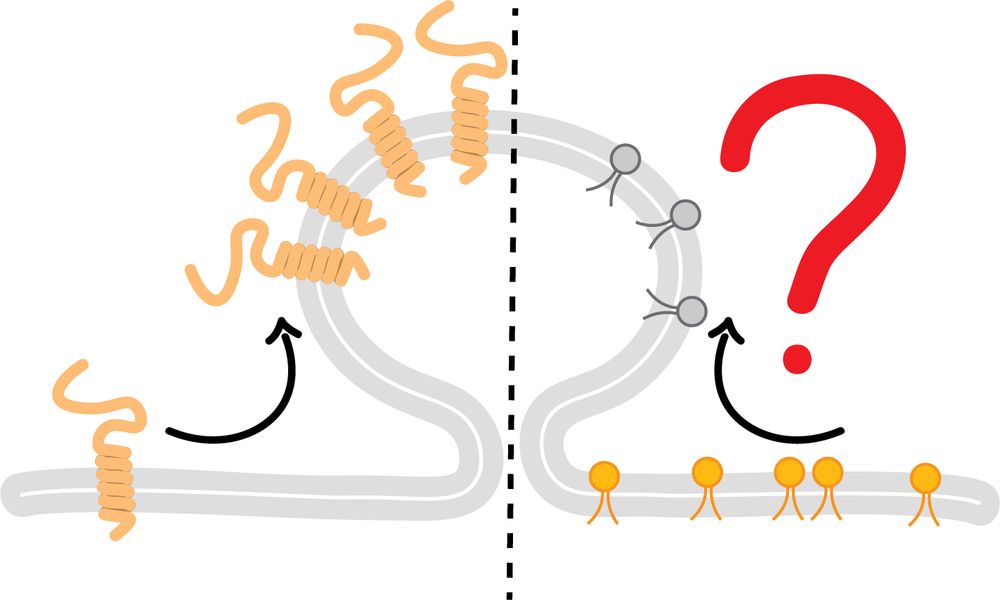
March 10, 2025 at 11:57 AM
Are lipids actively sorted during clathrin mediated endocytosis like proteins? @mathilda95.bsky.social addresses this key open question together with our collaborators from the Honigmann and Modes labs using a new Lipid-STED workflow.
www.biorxiv.org/content/10.1...
www.biorxiv.org/content/10.1...
Lipidic valentine's day cookies!

February 14, 2025 at 3:12 PM
Lipidic valentine's day cookies!
In times like these, gotta look at all the positives of your work, like when your wonderful student makes you this #lipidtime mug:


February 8, 2025 at 7:28 PM
In times like these, gotta look at all the positives of your work, like when your wonderful student makes you this #lipidtime mug:

